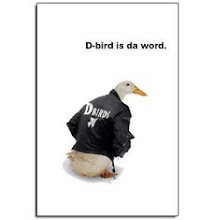A tad late (Fiction Saturday, anyone?), a few fiction-related snippets.
Eoin Colfer, author of the
Artemis Fowl books, will be writing a sixth and final book in the
Hitchhiker's Guide to the Galaxy series. Read
more here.
The chilling children’s tales of R. L. Stine are to be turned into a film series to rival the Harry Potter movies. Well, that's how the article starts. Read
more here.
Find video of the New York release party for
Brisingr, including a speech from Christopher Paolini, on the Suvudu blog
here. Note: video is YouTube, which may not work if you're on a school-based computer. We've got a waiting list for
Brisingr and our library's copies will be zooming out on loan early next week. One kid's been asking for DAYS when it will be available, even though I explained (each time) about embargoes and special release dates...he can't wait to read it.
To know that
Where the Wild Things Are is 22nd on
the current Amazon.com children's books bestseller list (whoo-eeee there's a lot of Stephenie Meyer ahead of it) makes me a happy happy reader. For children of a certain age, this is a book that just stills them and talks to the depth of their minds.
Again, they say, when you reach the end.
Read it again. And I do. There is a Spike Jonze film adaptation of this book due out in the US in October 2009. More info on that
here.
Currently, the most stolen books from our library (not a happy list to think on - our loss rate's usually pretty low and we do have a security system): unsurprisingly, Stephenie Meyer. We're down two
Twilights, one
Eclipse and one
The Host. I hope they're hidden elsewhere in the library.... but we've decided to keep Meyers behind the counter for now, visible but having to be asked for, to deter other light fingered fans and preserve them for other borrowers, and have put a sign on the section of shelves where they'd normally be (it's handy to have the actual Twilight-cover font to play with - if you want all four Twilight fonts,
here's my blog entry about them.).
.































